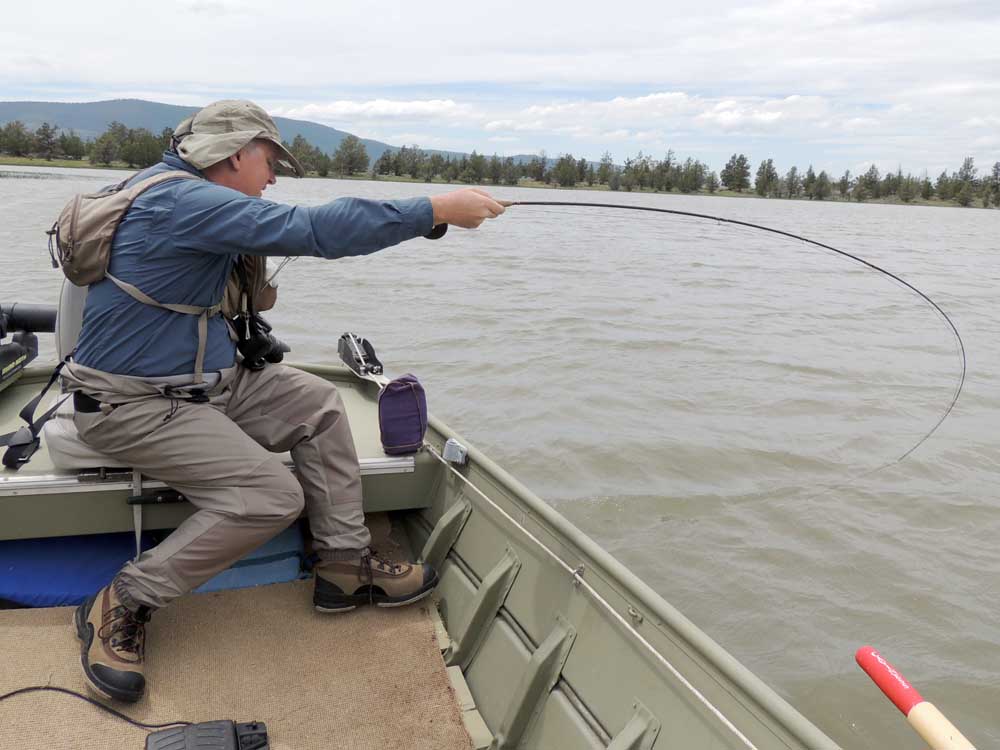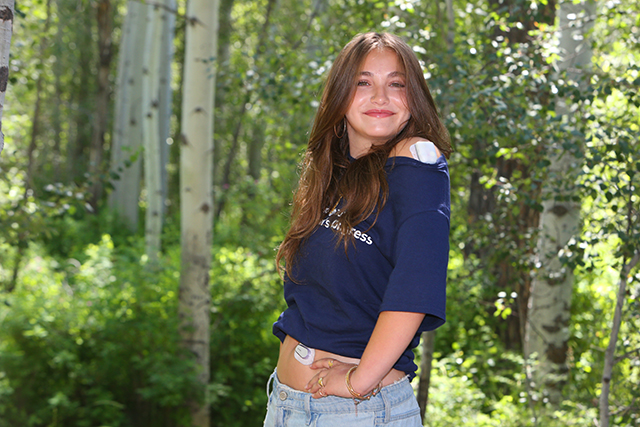Reading still waters for rainbow trout
Published 12:00 am Wednesday, June 15, 2016

- Gary Lewis / For The BulletinPete Chadwell fights a rainbow on a blustery day on Pronghorn Lake near Bonanza.
Mike Tyrholm left a voicemail message. He said the water would be murky in Pronghorn Lake and olive Woolly Buggers were working best.
The most important thing he said: “The trout are going to be 9- to 12-feet deep.”
Trending
It’s not easy to read the water in a lake, but it’s part of the challenge.
Pete Chadwell opened the gate, and we had our first view of the lake, a 150-acre reservoir south and east of Bonanza, just a dozen miles from the California border.
We’d stopped at Sunriver Fly Shop and Bob Gaviglio had recommended a few patterns. To start, I chose a Scott Robertson rabbit strip olive leech pattern with a red bead head natural rabbit hair leech on the dropper.
Out in my boat, 15 minutes away from the ramp, over the deep water, a fish grabbed and ran. After 2 minutes, the rainbow showed itself at the surface, about 22 inches, well-fed and sparsely spotted. Just as I was reaching for the net, it threw the hook.
A nasty wind blew from the south, but in our kickboats we were able to work out a trolling pattern. I guessed our flies ran down to about 9 feet.
Tyrholm said the previous group had landed 25 rainbows in one evening and a morning. They didn’t have to fight this wind.
Trending
It was one of those days when it was hard to hook a fish. We had arm-ripping grabs from way down deep, but were hard-pressed to keep a fish on for more than a headshake.
Tyrholm showed up at mid-morning. He pointed out another spot at the top of the lake, where there was deeper, cooler water, where the fish seemed to show a preference for chironomids. We took his boat and motored there against a wind that blew whitecaps on the lake.
I dropped the anchor, which only served to slow our wind drift. But we slowed enough that I was able to fish a two-fly chironomid in the zone for a few minutes. The water was not as murky as Tyrholm had led me to believe. Visibility was close to 30 inches, about what I considered minimum for a chironomid presentation.
Chadwell snugged his hat down tight and tied up with an ultraviolet olive beadhead leech.
On the second take, I managed to hook and land a 13-incher. It was not an easy fish to catch, but it went in the net, got posed for the camera and went back in the water.
On what must have been the fifth reset of the anchor adjacent to the “bucket,” Chadwell set on a big fish and it stuck.
While we blew across the lake, dragging our anchor across a silt bottom, Chadwell battled the rainbow. The big Kamloops sawed the line time and again on the anchor rope. We managed to get it in the net on the third try. We didn’t take the time to measure it but guessed it at 24 inches and 4 pounds. A hard-won trophy, Chadwell gave it a gentle release and watched it kick away. I caught one more about the same size as my first.
Jim Teeny and Denny Rickards have told me about the 20-plus pounders they caught at Pronghorn Lake. The ones I caught will be that big in about four years.
According to my journal, I fished 25 different waters last year in about 40 days. Part of the challenge of new lakes is reading the water fast.
It helps to get local knowledge. A trip to a fly shop can offer a lot of insight. Even if the proprietor hasn’t fished a particular spot, he might have heard a little scrap of information that can pay off.
One of the best clues on a lake is the water temperature. In cold water, the fish seek out the shallows for bug life stirring in the warmest part of the lake. In warmer water, trout go deep to find their most comfortable clime.
I like to look at the way the bank slopes down to the lake. A precipitous drop to the shoreline indicates deeper water there. On most reservoirs, the deepest water is near the dam.
Look for weedbeds where there is a gradual decline along a beach. Plan to fish chironomids or leeches above the tops of the weeds. Look for islands or rocky points or clumps of willows where baitfish are likely to huddle for refuge.
In late June and early July, some of the best still water fishing is going to be in the high lakes. Even the hike-in waters can harbor big trout.
Try to find local knowledge first. Take the time to watch the water before tying on flies. Watch long enough and the windows open into the depths and the lake tells you how to fish it.
— Gary Lewis is the host of Frontier Unlimited TV and author of John Nosler – Going Ballistic, Fishing Mount Hood Country, Hunting Oregon and other titles. Contact Gary at www.GaryLewisOutdoors.com.








